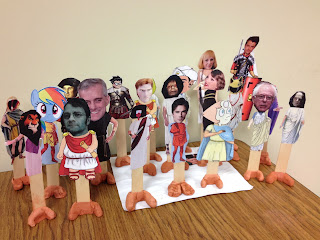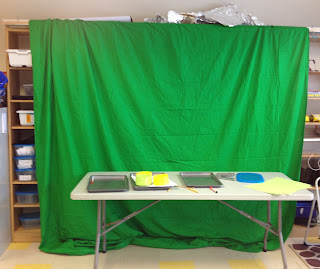6th Grade
Language Arts Lesson
In order to spice up
the sixth grade’s reading of Shakespeare’s Julius
Caesar in Language Arts, the LA teacher and I came up with a unique way to
get students more involved with the text and increase understanding. The
project is dubbed “Sticks with Heads.” The gist is that we are reenacting the
play using celebrities glued to popsicle sticks.
Here is how the
project works:
Characters from the
book are randomly assigned to each student in the grade level. The grade level
will make one complete set of Julius Caesar “Sticks with Heads” for the classes
to share. Each student decides on an actor or actress to play the assigned
character and writes up his or her justification for the casting. Once approval
by the teacher is given, the “stick with head” is created by printing out and
adhering a picture of the chosen celebrity’s head atop a typical Roman outfit
on a popsicle stick.
Originally, the
teacher wanted each class to record the entire play, but the time requirement
needed would be substantial. With my suggestion to make this more manageable,
each class is to be assigned only certain scenes to record. Then in editing, all
of the scenes from each of the classes will be combined into one big movie
encompassing the entire play. This twist to the filming creates an incentive to
record quality scenes and excitement to later find out what the other classes
have produced. Therefore, each class’s intended audience is the other classes.
The reenactment and recording of the play calls for a detailed examination of the setting, character interactions, and the characters involved in the different scenes. It also helps to justify and give purpose to the rereading of the scenes.
The reenactment and recording of the play calls for a detailed examination of the setting, character interactions, and the characters involved in the different scenes. It also helps to justify and give purpose to the rereading of the scenes.

